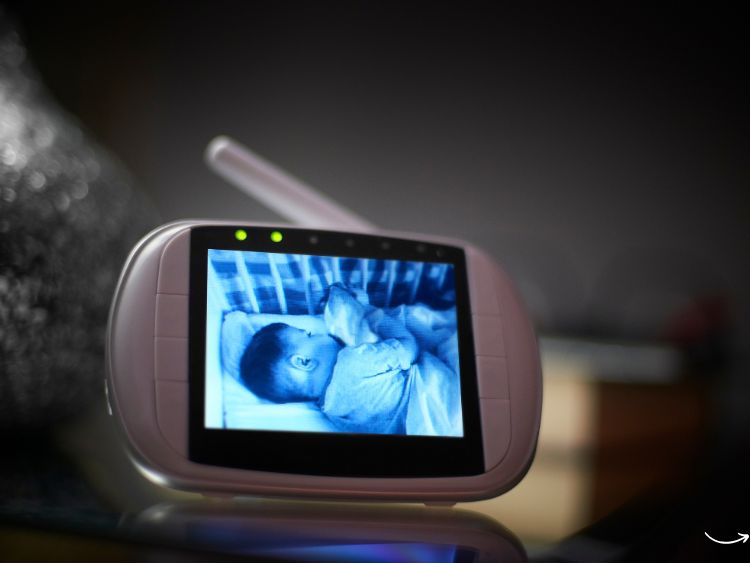Why a Baby Monitor Is Every Parent’s Best Friend
Let’s face it—parenting is a full-time job, and keeping an eye on your little one 24/7 is nearly impossible. That’s where a baby monitor comes to the rescue! These nifty gadgets help you stay connected to your baby, even when you’re not in the same room. Whether it’s ensuring their nap is undisturbed or monitoring their movements at night, a baby monitor is a must-have for modern parenting. But with so many options on the market, how do you choose the right one?
This guide breaks down everything you need to know—from the different types of monitors to key features and expert tips. Let’s dive in, shall we?
Types of Baby Monitors: Which One’s Right for You?
Not all baby monitors are created equal, so understanding your options is step one.
1. Audio Monitors
- What They Do: Transmit only sound from your baby’s room to the receiver.
- Best For: Parents who just need to know when their baby is crying or cooing.
- Pros:
- Affordable
- Simple to use
- Cons:
- No visual monitoring
- Limited features
2. Video Monitors
- What They Do: Combine audio with video, letting you see and hear your baby.
- Best For: Parents who want the added peace of mind of visual confirmation.
- Pros:
- High-quality video streaming
- Infrared night vision
- Cons:
- More expensive
- Can be more complex to set up
3. Wi-Fi Monitors
- What They Do: Use your home’s Wi-Fi network to transmit video and audio to your smartphone or tablet.
- Best For: Tech-savvy parents who want remote access.
- Pros:
- View from anywhere
- Multiple device compatibility
- Cons:
- Reliant on internet connectivity
- Security concerns
4. Smart Monitors
- What They Do: Offer advanced features like sleep tracking, breathing monitoring, and even temperature alerts.
- Best For: Parents looking for cutting-edge tech and insights.
- Pros:
- Comprehensive monitoring
- App integration
- Cons:
- Expensive
- May require subscriptions for additional features
Key Features to Look For in a Baby Monitor
1. Range
- How far can the monitor transmit signals? For larger homes, a longer range is crucial.
2. Battery Life
- A monitor with a long-lasting battery ensures you’re not constantly charging it.
3. Night Vision
- Infrared technology lets you check on your baby even in low-light conditions.
4. Two-Way Audio
- Speak to your baby through the monitor for added comfort.
5. Temperature Sensors
- Ensure your baby’s room stays at an optimal temperature.
6. Privacy and Security
- Look for features like encrypted signals to prevent hacking.
How to Set Up a Baby Monitor for Maximum Efficiency
Setting up your baby monitor correctly ensures you get the most out of it. Here’s a step-by-step guide:
- Choose the Right Spot
- Place the monitor at least 3 feet away from the crib to avoid safety hazards.
- Test the Signal
- Check the reception in various parts of your home.
- Secure Your Wi-Fi
- If using a Wi-Fi monitor, create a strong, unique password for your network.
- Adjust the Camera Angle
- Ensure the camera provides a clear view of the crib.
- Check for Interference
- Keep the monitor away from other electronic devices to avoid signal disruption.
FAQs About Baby Monitors
1. What’s the ideal range for a baby monitor?
Most monitors offer a range of 500 to 1,000 feet. For larger homes, opt for one with an extended range.
2. Are Wi-Fi baby monitors safe?
Yes, but ensure your Wi-Fi network is secure and the monitor uses encryption to prevent hacking.
3. Do I need a baby monitor if I live in a small apartment?
While it’s less critical in a smaller space, a monitor can still be helpful for peace of mind during naps or at night.
4. Can baby monitors detect breathing issues?
Some advanced monitors come with breathing sensors, but these should complement, not replace, regular check-ins.
5. How long should I use a baby monitor?
Most parents find them useful until their child transitions to a toddler bed, typically around 2-3 years old.
Top 5 Baby Monitors on the Market (2024)
1. Infant Optics DXR-8 Pro
- Why It’s Great: Non-Wi-Fi for added privacy, interchangeable lenses.
- Price: $200
2. Nanit Pro Smart Monitor
- Why It’s Great: Sleep tracking, HD video, and excellent app integration.
- Price: $300
3. VTech DM221 Audio Monitor
- Why It’s Great: Budget-friendly, excellent sound clarity.
- Price: $40
4. Owlet Dream Duo
- Why It’s Great: Tracks sleep and oxygen levels, ideal for data-driven parents.
- Price: $400
5. Motorola Connect60
- Why It’s Great: Flexible features, Wi-Fi enabled, and a solid app experience.
- Price: $150
Summary: Why Investing in a Baby Monitor Is Worth It
A baby monitor isn’t just a convenience; it’s a lifeline for busy parents. From keeping tabs on your baby’s safety to providing peace of mind, these devices are a parenting essential. By understanding the types, features, and best practices, you can find a monitor that suits your family’s needs. Ready to make the leap? Your perfect baby monitor is out there!
Authoritative Links:
- www.consumerreports.org/baby-monitors
- www.whattoexpect.com/baby-monitors
- www.babygearlab.com/best-baby-monitors
- www.nhs.uk/baby-safety-tips
www.cpsc.gov/safety-guides/baby-monitors





